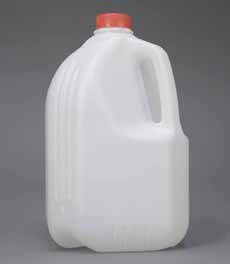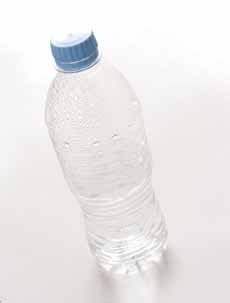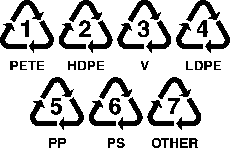TIP OF THE DAY: How To Recycle Plastics
|
|
On this last day of Earth Month, we’re taking the opportunity to discuss recycling plastics, an anti-environment scourge of the kitchen. Here’s the scoop: All potentially recyclable plastic contains a triangle with a number inside (photo #4). Those numbers are resin identification codes, which tell what kind of plastic the item is made from. The codes were created by the ASTM International Resin Identification Coding System. Plastics recycling opportunities vary by municipality. Not all recyclable plastics can be processed by all communities. And not all plastic is recyclable. To impede the effort, some plastics manufacturers omit the triangle. 1. PARTICIPATE: It may take some extra work, but keeping plastics out of the landfill by recycling them will make you feel better. Pat yourself on the back every time you have a yogurt or a soft drink. 2. RESEARCH: If you’re not already familiar with your municipality’s recycling opportunities, check its website. Or, search online for your local recycling program. 3. UNDERSTAND: If your plastic’s triangle has numbers 1, 2 or 5, great: These are the plastics with the greatest recycling demand in the U.S. What this means is, there is a secondary market for these recycled plastics. The money companies pay for them helps to offset the costs of municipalities’ recycling equipment and processing. Examples include butter tubs, laundry detergent bottles, milk jugs, soda and water bottles and yogurt cups. Rinse or otherwise clean them before recycling, and remove any paper labels if you can. 4. AVOID: Plastics made with resins 4, 6 and 7 are often not recyclable, so check your local website. Examples include some clamshells, disposable plates and cups, meat trays, plastic bags, pouches and squeeze bottles. Also avoid including plastics with PVCs. Examples include blister packs, packaging for cosmetics and some food wrap. Because of its chemical composition, PVC can contaminate large batches of plastics in the recycling system, that would otherwise be recyclable. Shopping bags and other soft plastics like plastic wrap and bubble wrap can’t be recycled, because they can jam sorting machines. 5. BEST PRACTICE: Do your best to purchase non-plastic options. It’s tough because our society has gone whole-hog for plastic solutions. We pretty much have to buy plastic to hold our garbage. But two easy fixes are: Here are the “recycling mistakes” to avoid. Here are details on the resin codes, and what your plastics are made from. *Plastic resins are created by heating hydrocarbons in a process known as the “cracking process.” Here’s more about them. |
|
|
|
||






